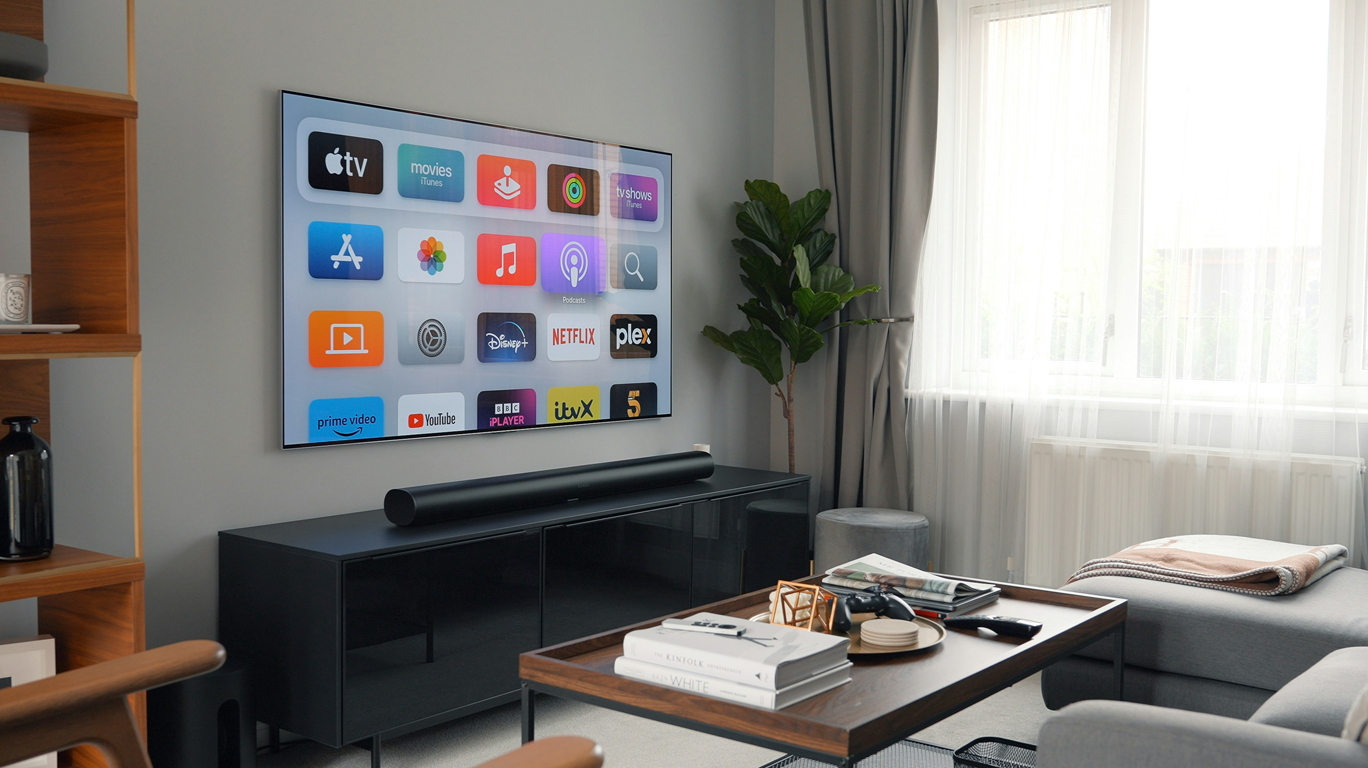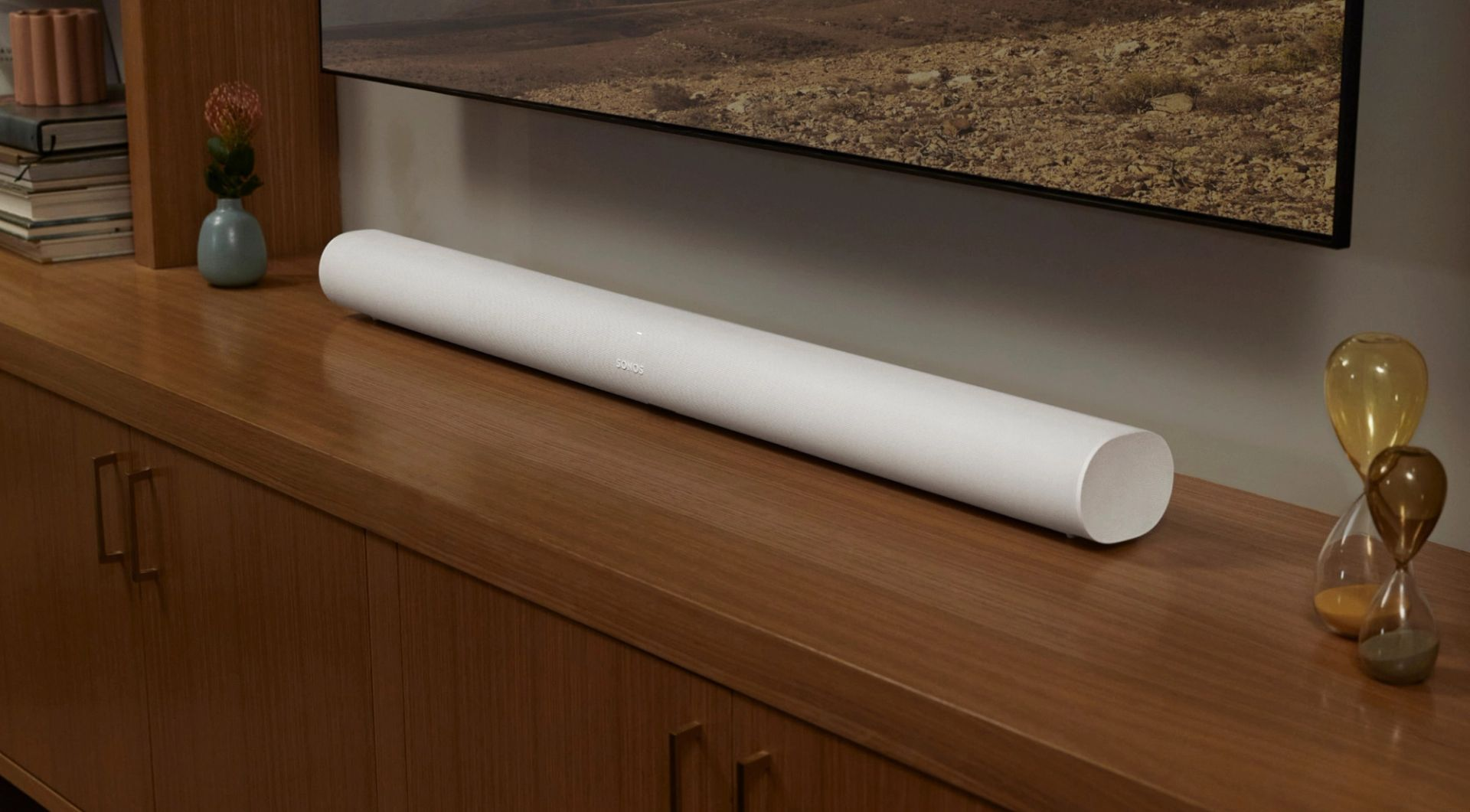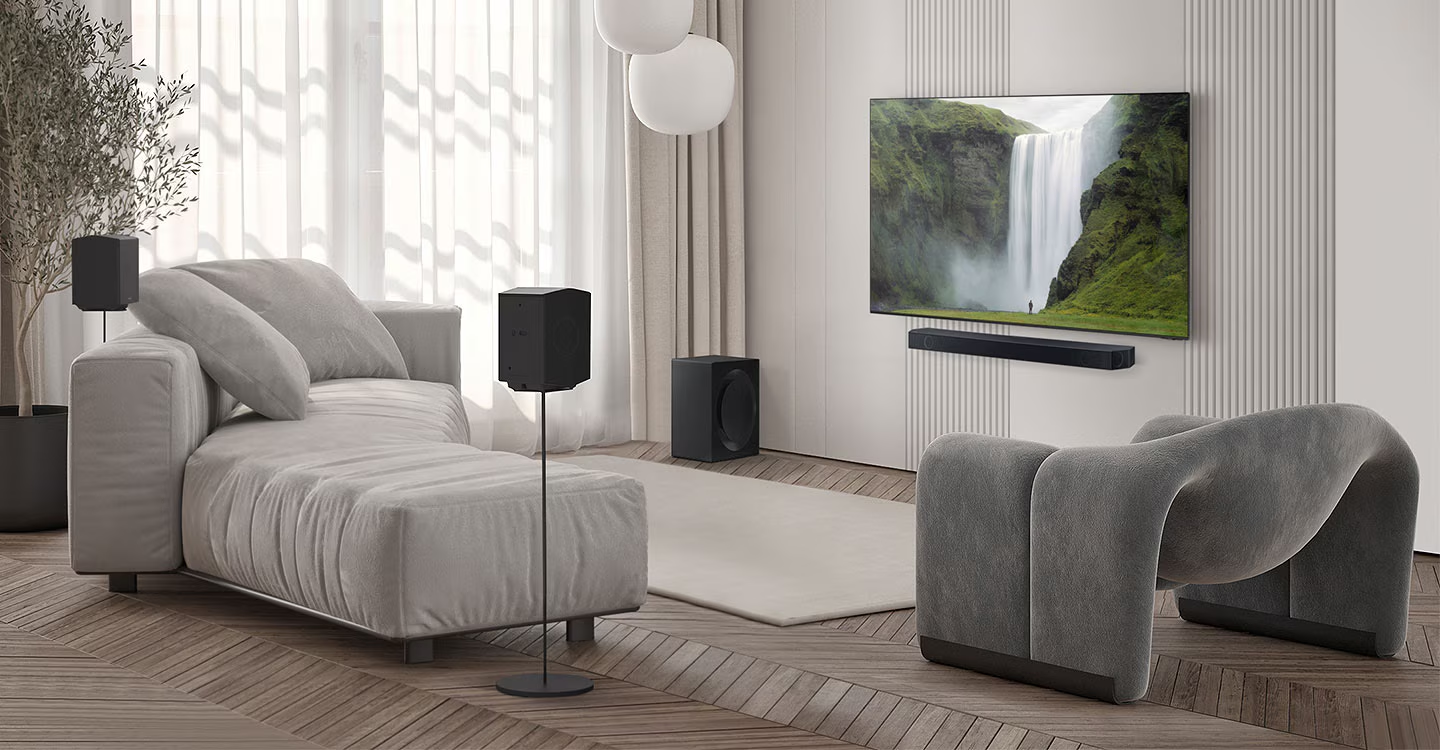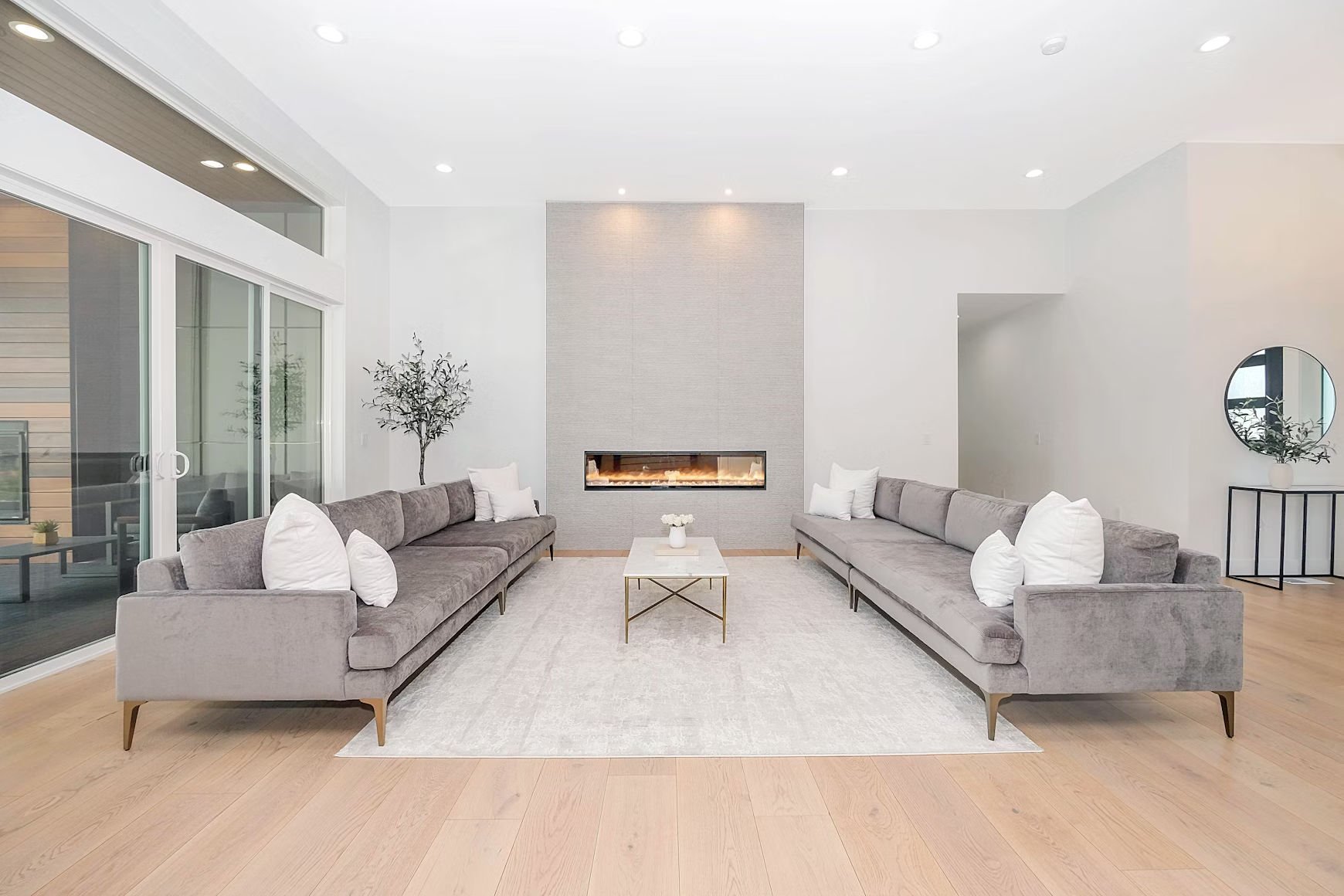Which Speaker System is Right for my Living Room?
 Adding external speakers to your TV is a major step on the road to incredible entertainment. With only a few strategically placed boxes and a few cables (or several Bluetooth pairings), you can transform your living room into an immersive home cinema, hyper-realistic gaming hub, or a virtual box in every sports stadium in the world. But just how do you go about it? You could get the whole set in one go, but is your living room big enough? Where will the subwoofer go? Besides, do you really need that many speakers if they’re just going to be used for soap operas and the news?
Adding external speakers to your TV is a major step on the road to incredible entertainment. With only a few strategically placed boxes and a few cables (or several Bluetooth pairings), you can transform your living room into an immersive home cinema, hyper-realistic gaming hub, or a virtual box in every sports stadium in the world. But just how do you go about it? You could get the whole set in one go, but is your living room big enough? Where will the subwoofer go? Besides, do you really need that many speakers if they’re just going to be used for soap operas and the news?
Before you click add to basket (or add them to a real basket), it’s important that you take a step back and make sure you get the right speaker system for your space. What looks perfect in the photographs or stuns you in the shop may be a whole other story in your own living room. It’s your living room after all, and for the best possible experience your speaker system needs to fit the space. How big your living room is and where your TV sits in it are major factors that need to be considered, but they’re not the only ones. Before you get out the measuring tape and start moving the furniture, have a think:
- How big is your TV screen? A big sound means nothing if the picture doesn’t match.
- How much is your budget? Great audio can be possible without breaking the bank, and a few well-chosen speakers can easily outperform a full surround system in the right space.
- How will you be using it? Different kinds of entertainment can take better advantage of sound systems, and some things you watch may not be compatible at all.
- How many ports does your TV have? While many speakers can connect to your TV wirelessly, physical connections with HDMI or Optical Audio ports can provide better quality sound and support more features. If your TV’s ports are taken up with other devices like Blu-Ray players, game consoles or satellite TV boxes, you won’t be able to connect your speakers physically.
- The neighbours! Are the walls thick enough? A powerful set of speakers are wasted if you can only use them on low volume.
All this fuss might have you thinking: what’s wrong with just using the TV’s speakers? Truthfully, just using the TV’s speakers is fine, but it will never be anything more than fine. As TVs have grown thinner, they have had less and less space for their built-in speakers – resulting in undersized speakers, cramped into the TV, often pointing sideways and backwards into the wall, that simply can’t provide the best possible sound. That’s why the right speaker system with the right TV in the right room can make a world of difference to your viewing experience. Our guide will help you to decide which speaker system is right for your living room.
Small Living Rooms – Less than 2.5m (8ft) from the TV
A small room can sometimes have advantages when it comes to sound. Sitting closer to the audio source and having less wall space for soundwaves to bounce off of can reduce reverberations, leading to a sound that is closer to the intended quality. However, small rooms can also result in ‘hollow’ sounding audio, especially if the room has a hard floor and not much furniture.
For a small room, the ideal TV speaker is an all-in-one soundbar. This is a low, wide speaker designed to sit beneath or in front of your TV, which contains a range of built-in speakers designed to produce multiple channels of sound across a wide range of high and low frequencies. Compared to your TV’s speakers, a soundbar will sound richer and more balanced.
 Image courtesy of Sonos.
Image courtesy of Sonos.
Depending on the specific model you buy, an all-in-one soundbar can also feature:
- Centre and up-firing speakers for clearer, louder, centre-panned (not sent just to the left or right speakers) sounds, such as dialogue.
- Dolby Atmos or DTS:X sound enhancement for a virtual surround sound effect.
- A bracket to hang the soundbar beneath a wall-mounted TV for a clean, modern look.
- Bluetooth or Wi-Fi connectivity to pair wirelessly with your TV and other devices.
With an all-in-one soundbar, you get one speaker that plugs into one socket, which can be connected to your TV wirelessly or with one short HDMI cable that can be tucked out of the way. Ideally, the soundbar you buy should be the same width as or shorter than your TV for a more balanced sound and look. While you don’t need to use a soundbar from the same manufacturer as your TV, some manufacturers include special features that can only be used on matching systems. Samsung’s Q-Symphony and LG’s WOW Orchestra allow you to play sound from your connected speaker system and the TV’s built-in speakers at the same time, filling the room with immersive sound.
Medium Living Rooms – 2.5m to 4m (8ft to 13ft) from the TV
A slightly larger living room with more space opens up more speaker opportunities. As you are sat at a slightly greater distance from your TV, some frequencies may become weaker on their way to you, and there is an increased risk of reverb bouncing from the walls and muddying your sound.
This is why, for medium rooms, we recommend that you buy a soundbar and subwoofer. A subwoofer is a separate speaker that sits on the floor and only produces ultra-low frequencies, enhancing the sound from your soundbar and other speakers with a rich, thudding bass. This will help to make up for lower frequencies lost from the greater distance between you and the soundbar. Many modern subwoofers can connect wirelessly, giving you the freedom to place it anywhere you want in the room (within reach of a plug socket). This is especially important because the best position for your subwoofer depends entirely on the shape and acoustics of your room.
 Image courtesy of Bose.
Image courtesy of Bose.
To find the best position, you should perform a test audio fans call the ‘subwoofer crawl’:
1) Connect your subwoofer to your soundbar and TV.
2) Sitting where you normally would, play a song with lots of bass from a music channel or app.
3) Get up and move the soundbar to different positions in your room. You may need to plug it into different sockets if your room is particularly big.
4) Compare the sound from the subwoofer and make a note of positions where it sounds particularly good.
5) Rule out spots where it doesn’t sound as good or where it will be in the way, such as positions with a lot of foot traffic.
6) When you have found the best spot, put the subwoofer there and enjoy!
For the best possible experience, you should buy a soundbar and subwoofer kit, as they will be tuned to work together as best as possible. If you are expanding an existing soundbar with a subwoofer, you should check your soundbar’s instruction booklet first to see if it is compatible and buy a subwoofer from the same manufacturer to ensure compatibility and consistent sound quality.
Large Living Rooms – 4m (13ft) or more from the TV
Larger living rooms can provide much more space to play with sound, and more reasons to do so. More distance and more wall space means more reverberations and weakened frequencies, making it necessary to expand your speaker system even further. At this point, whichever speakers you go for will need to be in surround sound, with audio not merely coming from the direction of the television (and from wherever you placed your subwoofer) but from all around you. While it’s not yet time to dig into the specifics of surround sound, for this setup we recommend adding dedicated left and right speakers to your soundbar and subwoofer, and potentially even replacing the soundbar with a dedicated centre speaker.
Left and right stereo speakers help to transform your sound system from incredible to immersive. No matter how many speakers a soundbar has, all of the sound emerges from the same narrow point. This means that dynamic sounds that have been designed to come from the left or right speaker alone can become lost in the rest of the sound. With separate left and right speakers, these sounds now have room to breathe. Things like cars travelling across the screen can now have sound that matches their movement realistically, creating a true-to-life effect that compliments the visuals.
 Image courtesy of Samsung.
Image courtesy of Samsung.
With more sound coming from more directions, positioning your speakers correctly becomes very important. Your goal is to create a ‘sweet spot’ where the sound from all of your speakers meets equally for the best possible listening experience. With the soundbar in front of you and the subwoofer positioned for perfect vibrations, the left and right speakers should be an equal distance from the TV and angled inwards towards your ‘sweet spot’. Imagine that there is a straight line emerging from the front of each speaker and the soundbar. You want these lines to meet at your seating position, which becomes the ‘sweet spot’ with the best possible sound. Not sure if you’ve put the speakers on the right sides? There are numerous left and right speaker tests on YouTube, which is available as an app on most smart TVs.
With the left and right speakers covering the dynamic channels, you may want to consider replacing the soundbar with a dedicated centre speaker. Unlike a soundbar, a centre speaker produces just one channel of audio but still plays a critical role in your speaker system. The centre audio channel delivers most of the audio, estimated at about 70%, including most of the dialogue and vocals from songs. Without a centre speaker in your system, this is instead split between the other channels, resulting in weaker, harder-to-understand dialogue. This is part of the reason why speech can be hard to understand on built-in TV speakers, which tend to only have left and right stereo channels. With a dedicated centre speaker, you have a focal point for your surround sound system and the ability to hear richer, cinema-style audio. However, most centre speakers will not fit beneath the TV like a soundbar, and will need to stand independently beneath a wall-mounted TV for the best possible acoustics.
Open Plan Living

At this point, any changes you make to your sound system will simply be adding more speakers for more channels of audio. While this is primarily meant for home theatres, where the room is dedicated entirely to watching entertainment on the TV, an extensive surround sound system is also suitable if your living space is open plan. As mentioned above, sound reverberates and becomes more muddled in larger rooms, and this is especially true of open plan homes. Not only will the sound from your speakers be more dispersed, but your audio experience will be interrupted by sounds from elsewhere in the house. For a better experience (and fewer calls to “turn it down” from the kitchen and dining areas, you should consider investing in a full surround sound system.
As with all speakers, surround sound systems are defined in terms of the channels – the number of audio tracks – they can produce. If a surround sound system is described with the number 7.1, this means there are 7 regular speakers and 1 subwoofer in the system. The regular speakers would typically consist of 1 centre speaker beneath the TV, and 3 pairs of left and right speakers beside the TV, to each side of the listener and behind them. If a surround sound system features a third number, like 5.1.2, the 2 refers to the number of up-firing speakers, which bounce sound off of the ceiling to make overhead sounds like planes more immersive.
For open plan living rooms, an advantage of surround sound systems is that you can get dynamic, vibrant audio while keeping each speaker at a lower volume. The sound itself is divided between the speakers, resulting in immersive, loud sound in the ‘sweet spot’ where each speaker’s sound meets and less sound bleed outside of the system. While people in other parts of the open plan living space would still be able to hear the speakers, they would be quieter than inside the surround sound system, making it easier to concentrate on other tasks.
Cramped or Busy Rooms
On the other side of the scale, people with not much extra space in their living room – no matter the size – may struggle to find TV speakers that are right for them. If you have limited floor space or are unable to mount things on the walls, this can limit your options when it comes to speakers – but it does not mean you have to go without. Compact soundbars are available that can fit between your TV’s legs, taking up no extra space while providing a rich, bassy sound experience. Similarly, vertical TV speakers with very small footprints can be used to provide a small-scale surround sound experience. If you have no available space, you might want to consider getting a TV that uses screen speaker technology, like the Sony Bravia range. Unlike most built-in TV speakers, these use the entire screen surface as an amplifier to produce louder, clearer audio.
Living Rooms with Children
If your living room is also the playroom or the nursery, having lots of expensive technology connected with cables might make you pause for thought. However, there are a few steps you can take to make your speaker system child-friendly.
- Connect your speakers using Wi-Fi or Bluetooth technology. Without cables going across the room, there will be nothing for children to trip on or tug at. Wi-Fi and Bluetooth controls can also be placed behind a password to prevent speakers from becoming disconnected.
- Avoid top-heavy or floor-level speakers. These may be easily knocked over or too tempting to climb on.
- Mount speakers to the walls. Many soundbars and other speakers come with wall mounting kits in the box or available to purchase separately. You should always follow the instructions to make sure they are stable and secure, and mount them out of reach.
- Make sure your controllers are hidden away. If you’ve bought your speakers separately, each one may come with its own remote control. You should make sure these are locked away safely to prevent them being used accidentally. If they are compatible, you could pair their controls to Universal Remote with a pin for added security.
- Cover and hide plug sockets. Adding childproof covers to your plug sockets can prevent major incidents and keep your children and your speakers safe. Empty sockets should always be covered to reduce the temptation to stick things in there.
- Set volume limits. It’s not just the size of your speakers that can pose a risk to your children. Extended periods of loud noise are bad for ears of every age, but especially for young ones. You can set a volume limit for your TV in the settings menu of most models.
- Do not leave your children unsupervised around your speakers. As with all the other devices in your home, speakers are not built for play and children should not have unsupervised access to them.
By following these steps as you plan and build your TV’s speaker system, you can make your living room a space where people of all ages can enjoy immersive entertainment.
Conclusion
However big your living room is, you can build a speaker system that fits your space. Whether you go for an all-in-one soundbar, a home theatre system or something in between, you can enhance your TV viewing experience with incredible sound. If you do size up or fancy a change further down the line, you can keep your favourite speakers and incorporate them into a larger system. This flexibility ensures that your speaker system can grow and adapt with your needs.




